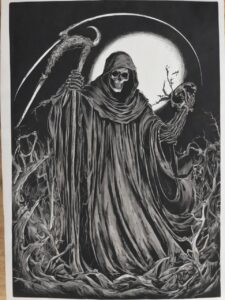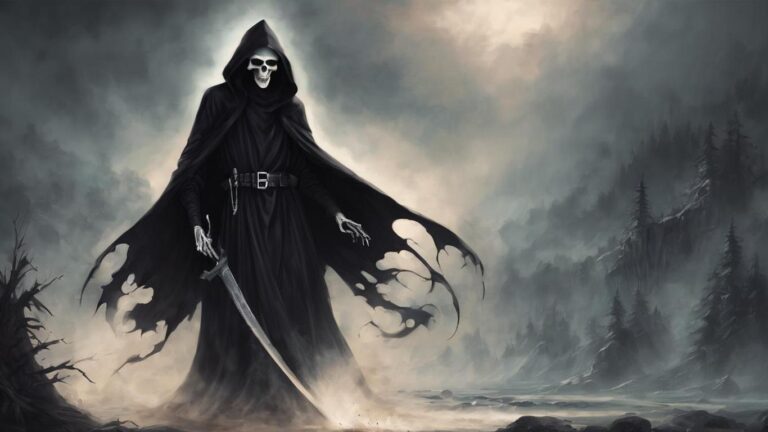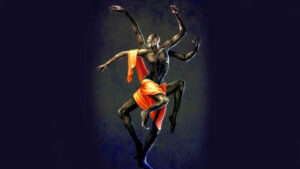Table of Contents
The Grim Reaper, often depicted as a skeletal figure in a dark hooded robe, is a symbolic personification of death in Western folklore and popular culture. Commonly portrayed carrying a scythe, the Grim Reaper is associated with the idea of escorting souls to the afterlife. It is a cultural and mythological image that transcends specific religious beliefs and has become a recognizable symbol representing mortality and the inevitability of death. The concept of the Grim Reaper has appeared in various forms throughout history, serving as a powerful and universal metaphor for the end of life.
Origins

In the annals of folklore, the origins of the Grim Reaper are shrouded in mystery. Emerging from medieval European traditions, this enigmatic figure embodies death.
According to some accounts, the Reaper’s roots trace back to ancient depictions of death personified. As cultures evolved, the image solidified, culminating in the iconic skeletal figure. Transitioning from a mere representation to a spectral entity, the Reaper’s role expanded. Folktales often wove narratives of encounters with the Reaper during life’s twilight moments. Despite cultural variations, the Grim Reaper’s essence endured, becoming an indelible symbol of mortality.
Legends suggest that the Reaper’s signature scythe, a tool of harvest, symbolizes the cutting of life’s thread. The image of the Grim Reaper persisted, adapting to art, literature, and popular culture. Its presence extended beyond folklore, resonating as a universal harbinger of life’s end. Through the ages, the Grim Reaper’s origins evolved, a testament to humanity’s shared contemplation of mortality.
Apearance
The Grim Reaper cuts a haunting figure with a long, flowing, black cloak and hood. This cloak symbolizes darkness and the enigmatic essence of death. His face, often portrayed as a skull or skeletal form, underscores the association with mortality, an inescapable reality.
He wields an iconic scythe, a curved farming tool with a long handle. The scythe, a powerful symbol, signifies the harvesting and cutting down of life, emblematic of the end of one’s earthly existence.
As he appears, the Grim Reaper takes on a shadowy or ghostly form, heightening the eerie and supernatural aspects of his character. This spectral representation adds to the mystique surrounding death.
These depictions of the Grim Reaper vary across cultures and artistic renditions. Over time, his image has evolved, shaped by diverse cultural, religious, and artistic influences. The Grim Reaper remains a potent symbol, embodying the universal and timeless concept of mortality.
Symbology





